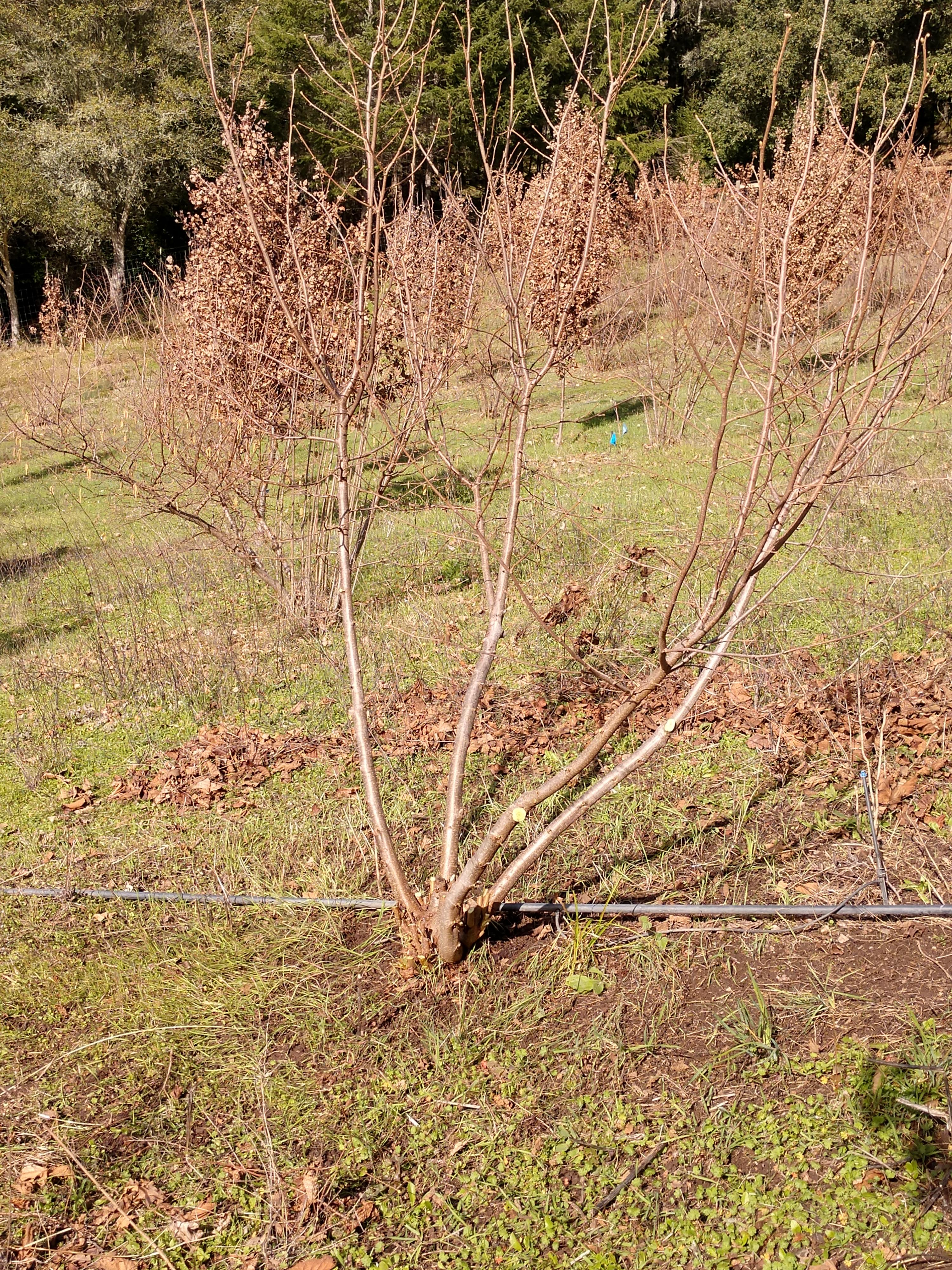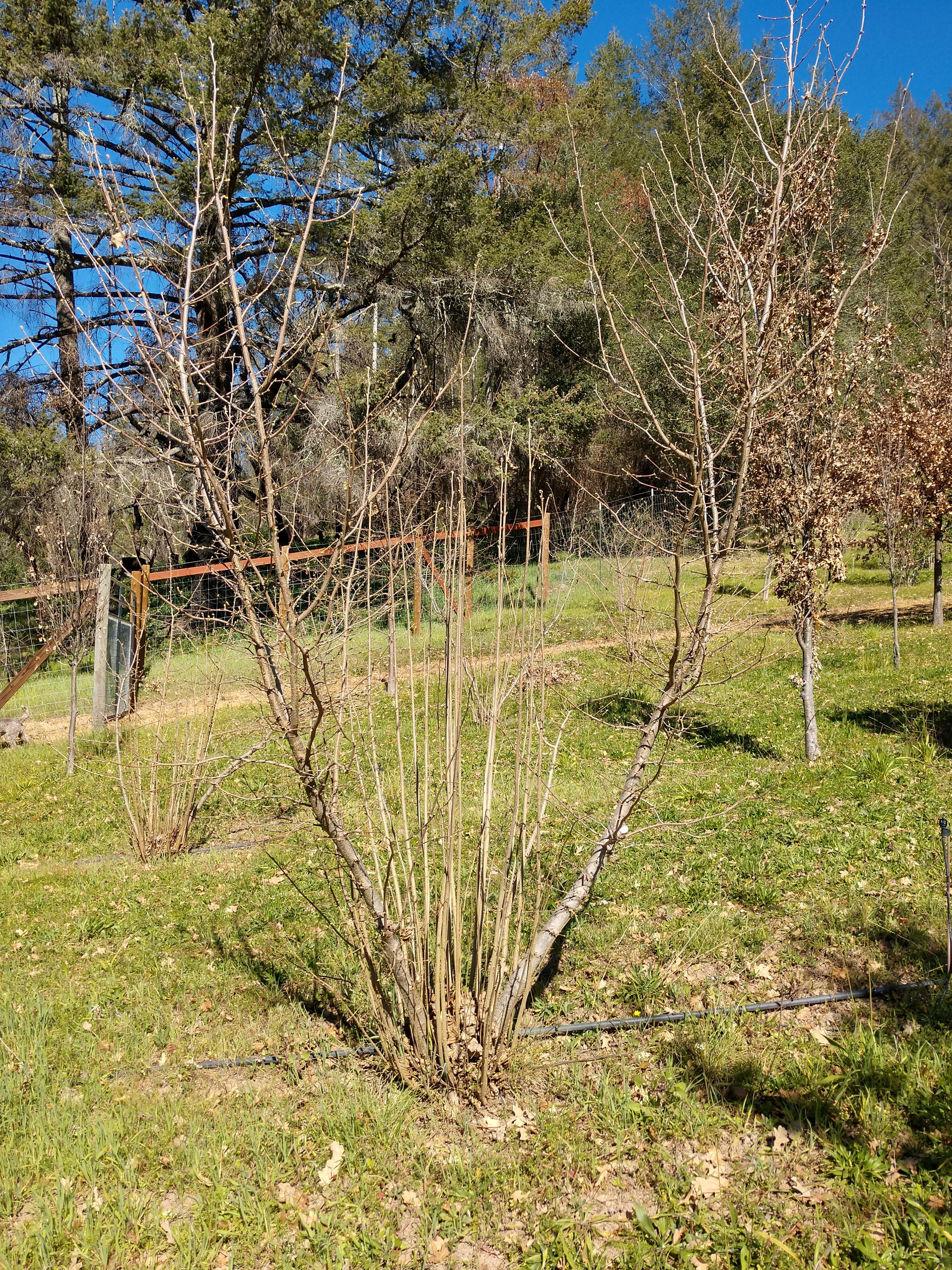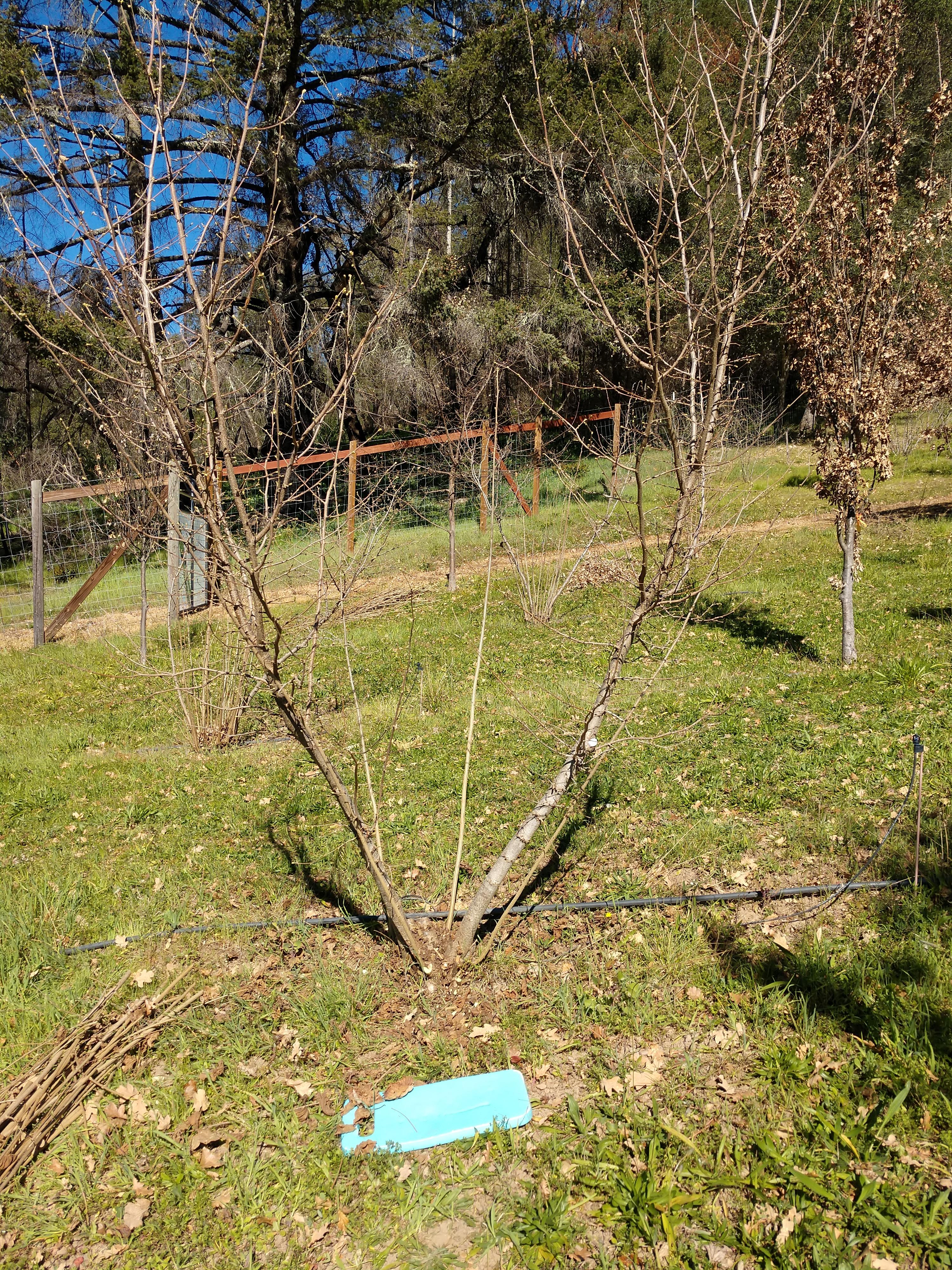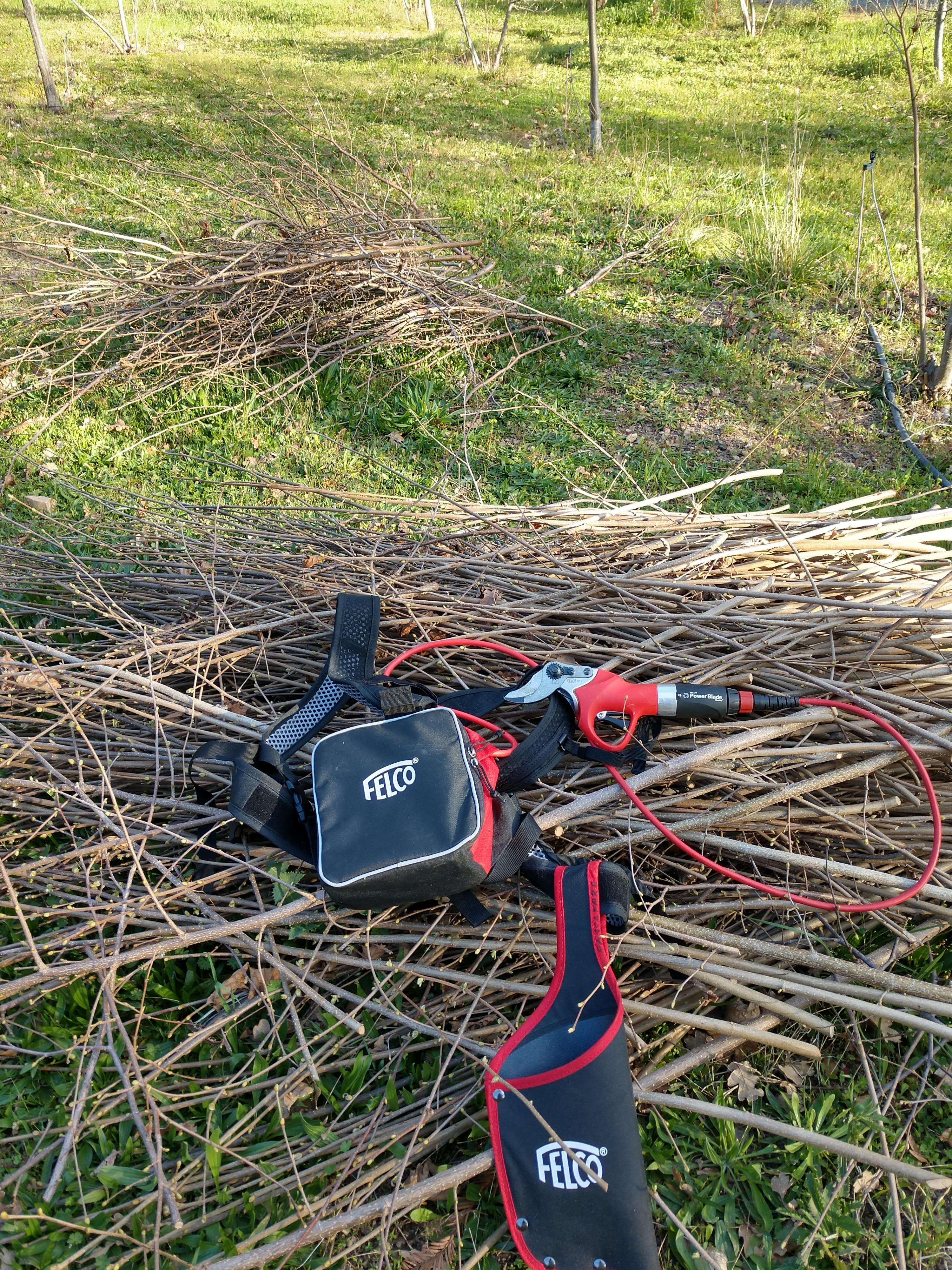Forum Replies Created
-
AuthorPosts
-
::
This is a tuber melanosporum orchard, so maximum pruning to get sun to the roots of the tree. Pruning all little suckers and raking leaves away from base of the tree. Also pruned up all branches coming off main stems to about 3 feet from the ground, to allow for the dogs to have better access close to the tree later in the year.
r
 ::
::The ratcheting feature allows you to cut through very large branches with ease. They provide a lot of power without stressing your hand. If you have never used a ratcheting tool, you really need to check it out. The blades are very sharp and they clean up nicely. I will probably try out their replacement blades at some point. I have to be honest that these are the first ratcheting tools that I have used, so others may have additional brands to recommend, so we look forward to hearing from you.
::Thanks Elise! You did a much better job describing how ratcheting tools work. “minimum effort to get maximum result” says it all. You should definitely try one out. In California we also have a lot of work every year on ‘fire hardening’ and limbing up trees and removing a lot of brush and fire fuel. The larger lopper with telescopic handles has come in very handy outside the orchard as well!
July 21, 2020 at 8:17 pm in reply to: How do I change my profile and add an image next to my name (AVATAR) #4021::We also give a big thumbs up to the Felco PowerBlade pruners! We have the 812 model. We use it to cut all the hazel suckers and to trim up the oaks. We were able to prune over 160 trees (mostly hazels and a few oaks) in 8 hours (actual time on the pruner) making over 10K cuts. On average, we were able to prune a tree in less than 3 minutes, making about 64 cuts/tree which averaged over 1200 cuts per hour. And no carpal tunnel or hand or wrist pain! We highly recommend this tool as a major labor saving tool! Here’s a hazel pre-pruning

-
AuthorPosts



23 comments
Wendy Snow
Hi,
I’m trying to view the 2021 fall congress report, but it won’t load.
“Error loading pdf”
Fabrice Caporal
Thank you for bringing this to our attention. It is now fixed.
Fran Angerer
What was the outcome of this grant?
Staci O'Toole
Hi Fran.
If you click on the title it will take you to the details regarding the grant and it’s outcome.
The Primaries were Jeannine Davis and Inga Meadows. Although the research task force was not established yet there is quite a bit of information and details. If I remember correctly it helped establish their lab at NC State
Paul Beckman
Extremely well done. One of the issues that is confusing is that when Mark and I took soil samples on my Bianchette orchard. Both years the soil probe went through mature truffles in November. 100 percent truffle present. My guess is that soil samples should only be done in June This was caused by funding limitations at the time that affected our schedule.. Another area that needs to be explored is the multiple tubers in one sample. We were trying to get Western Labs Parma Idaho to develop this but timing didn’t work out. They can test for 6 nematode types in each sample. Only needs a tablespoon of soil. Seemed like reasonable way to test a lot of orchards.
Fabrice Caporal
A nice problem to have, too many truffles!
Alex Poole
Great overview
Holly Martin
Would have been nice to have an end time on Sunday for booking travel
Jeffrey Coker
1. This proposal is almost verbatim the UNECE Standard FFV-53 with some added (somewhat complicating) language about the percentages of classes that can be exposed by trimming and a couple of other things. Why not just endorse the UNECE standards and prevent the confusion of having yet another set of standards? [In our case at Burwell Farms, we are also being inspected by the state of NC and following both state and USDA food safety and packaging rules.]
2. The stated purpose of the proposal is to “standardize the quality requirements for use of the NATGA logo”. Is logo use currently a problem? Are we talking about use of the NATGA logo only on food packaging, or also on grower websites? If a grower chooses not to use NATGA’s class system, then should they remove the NATGA logo from all their materials?
Holly Martin
Species: Since both T. Gibbosum and T. Oregonense are described as Oregon White Truffle, it might be useful to include seasonal designation, i.e. Oregon White Truffle (Spring) for T. Gibbosum and Oregon White Truffle (Winter) for T. Oregonense.
II.C (iv): This is just a drafting suggestion. I found the second sentence, as organized, a little hard to follow. My suggested text has all the same information, just reorganized: Provided the truffles retain their essential characteristics as regards the quality, the keep quality and presentation, the following defects may be allowed: defects in shape, defects in development, defects in coloring, superficial bruising, and slight superficial damages caused by pests.
Over all, nice job and thanks for all the good work!
Karen Passafaro
I would add a few pictures of what you are recommending with packaging and labels
Fabrice Caporal
I like the Identification requirement. Now do those classification apply to a member of NATGA importing and reselling truffles? What then should be done with identification?
Fabrice Caporal
I never heard of the Icon class, interesting
Fabrice Caporal
Weight and shape characterizations do not apply uniformly across species. It looks like the document is centered around T. melanosporum. It would be a great challenge to find a 300g oregon truffle… another example is that Tuber magnatum is rarely round.
Fabrice Caporal
In Definition of Produce we say “species of the the genus Tuber” yet in the list of truffles below we proceed to include Oregon truffles which are not of the Tuber genus. I would be in favor of changing the definition of truffle to say what is in Wikipedia:
Or if we want to be less scientific we could say:
Fabrice Caporal
Note: From time to time the sound of this video is distorted for a few seconds at a time. This is a problem with the original recording and is not a problem with your system. Thank you for your understanding.
Fabrice Caporal
Please use the dedicated forum to discuss and ask questions about this webinar.
Bryan Denig
Such a great webinar from Christine. I am very appreciative that the webinar recordings are being posted for those of us who are interested but unable to attend live. Looking forward to the others!
Raymond and Bernadine Prince
please put Raymond on your list of participants for the Webinar
Fabrice Caporal
Thank you for your comment. You now can now register to the webinar using this link: https://us02web.zoom.us/webinar/register/5815946801873/WN_AfzFkTZmRxioFHhLKDk9qQ
Fabrice Caporal
Feel Free to submit questions or comments about this webinar using the comment feature of this page.
Fabrice Caporal
Feel Free to submit questions or comments about this webinar using the comment feature of this page.